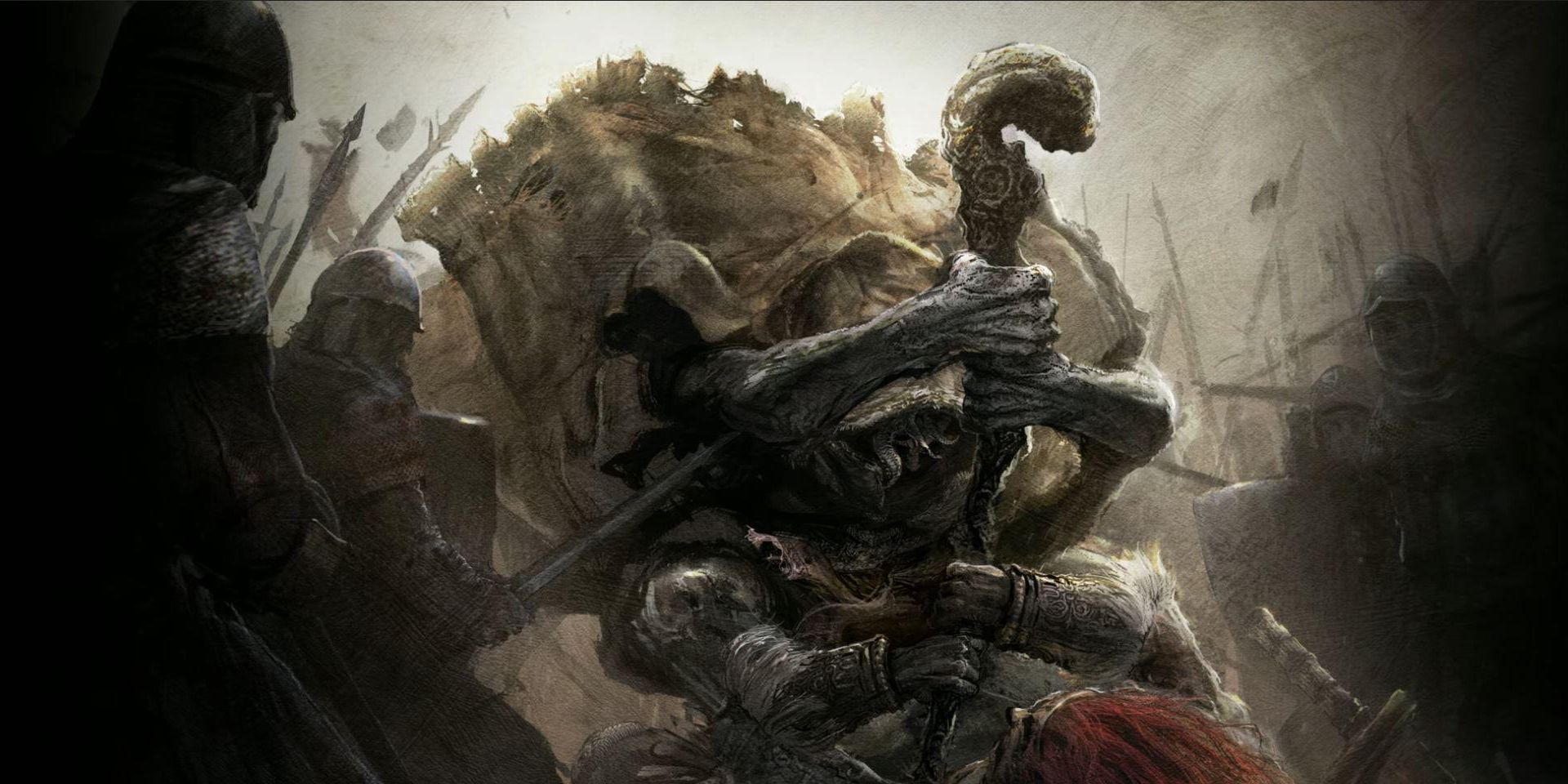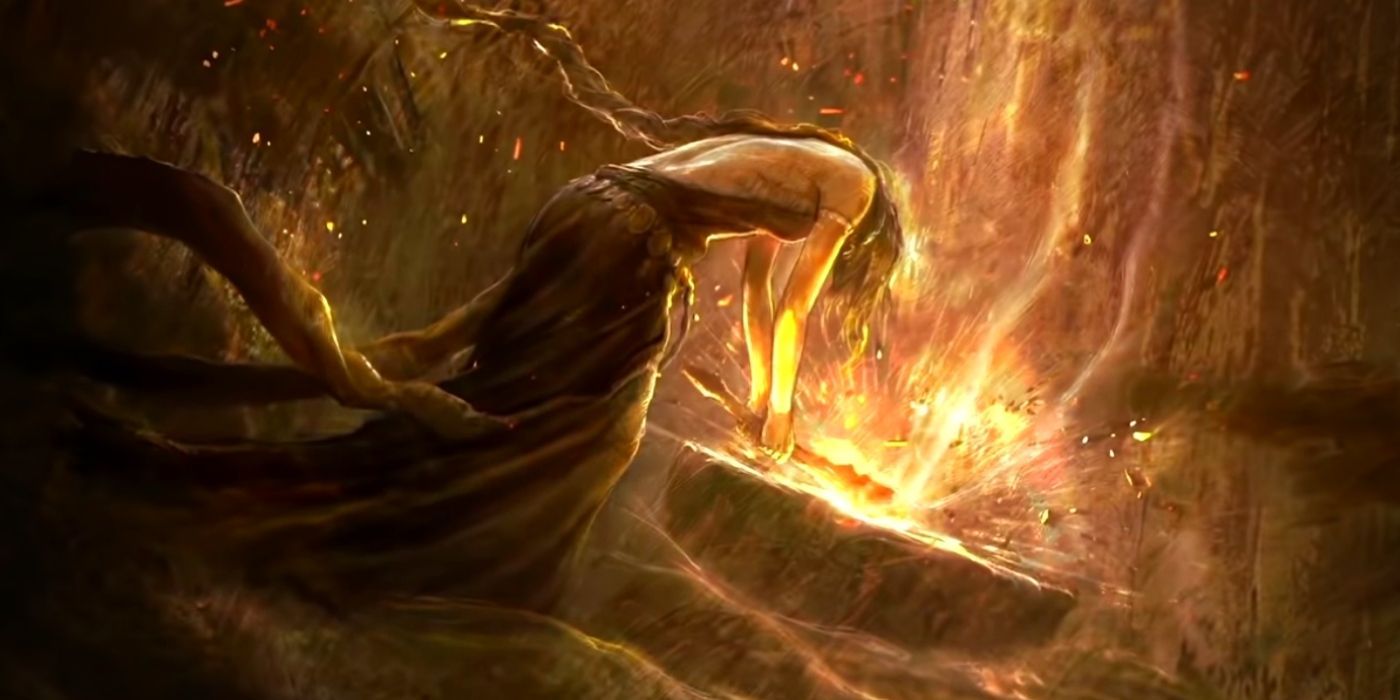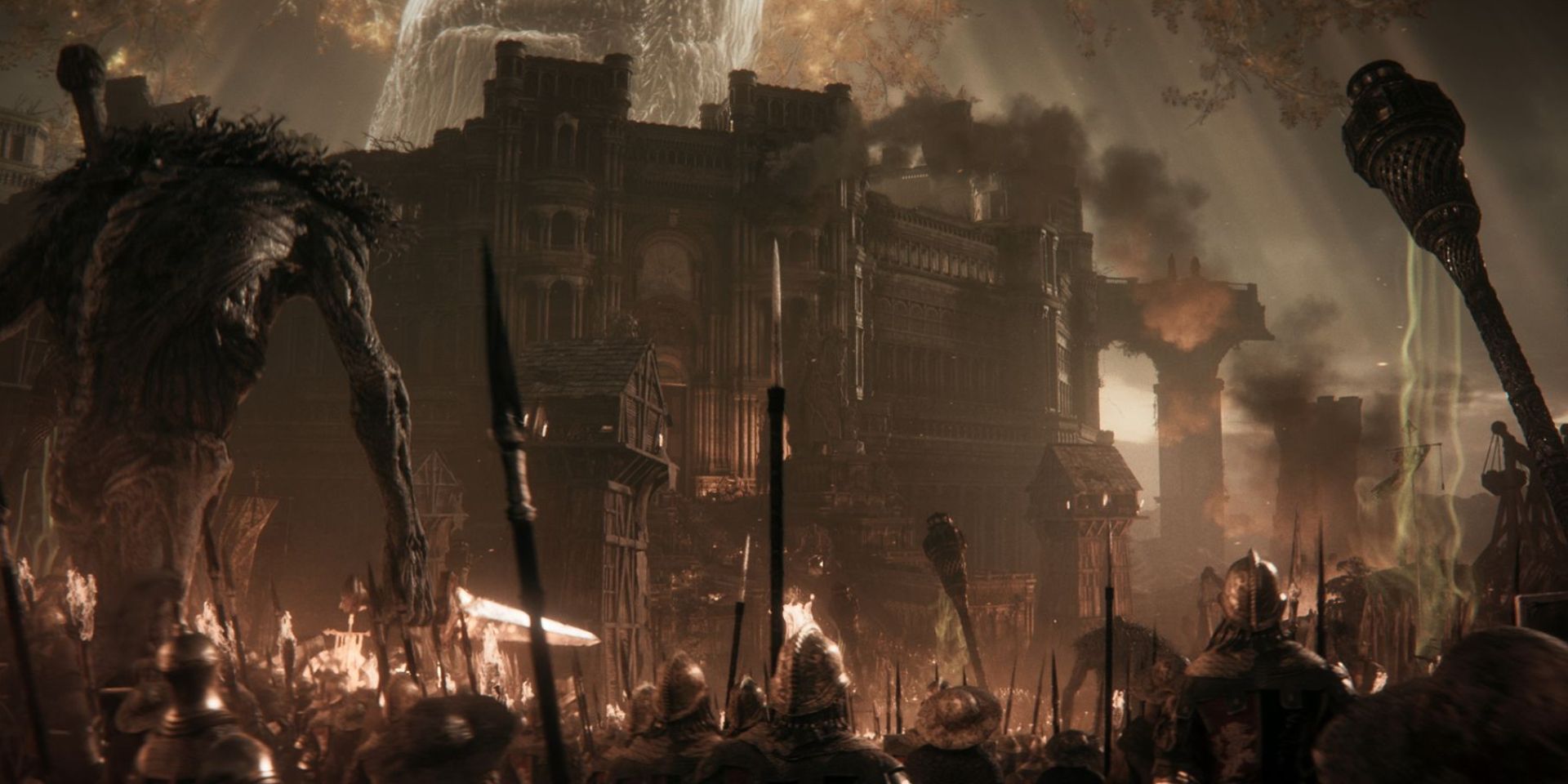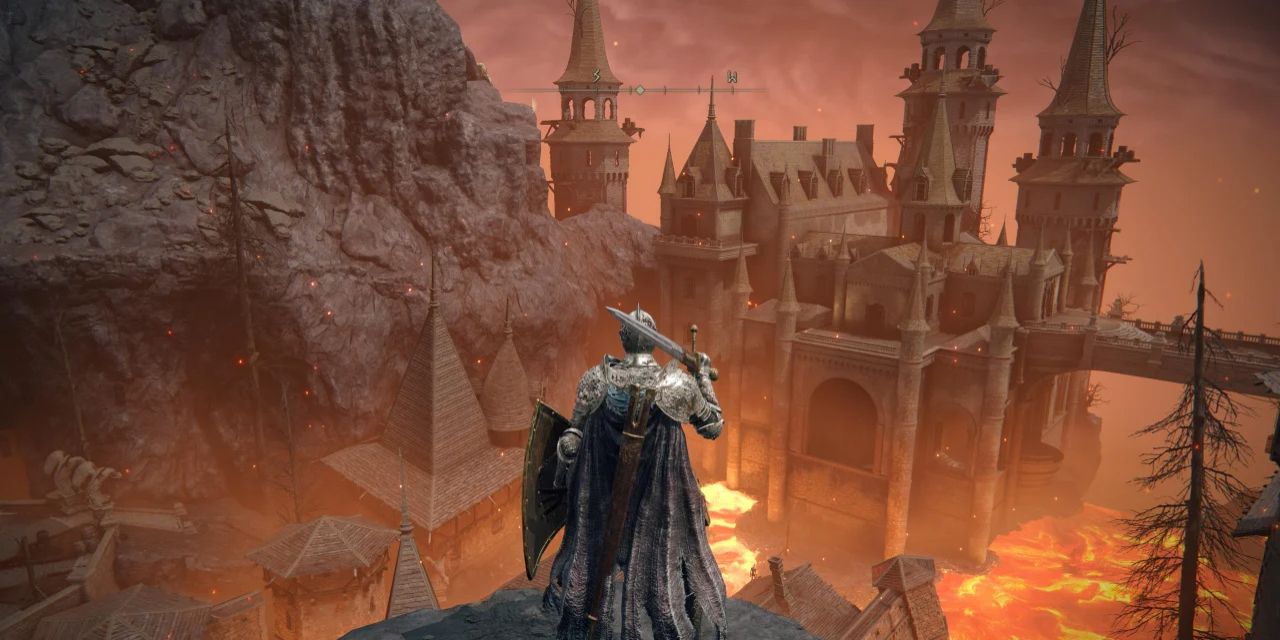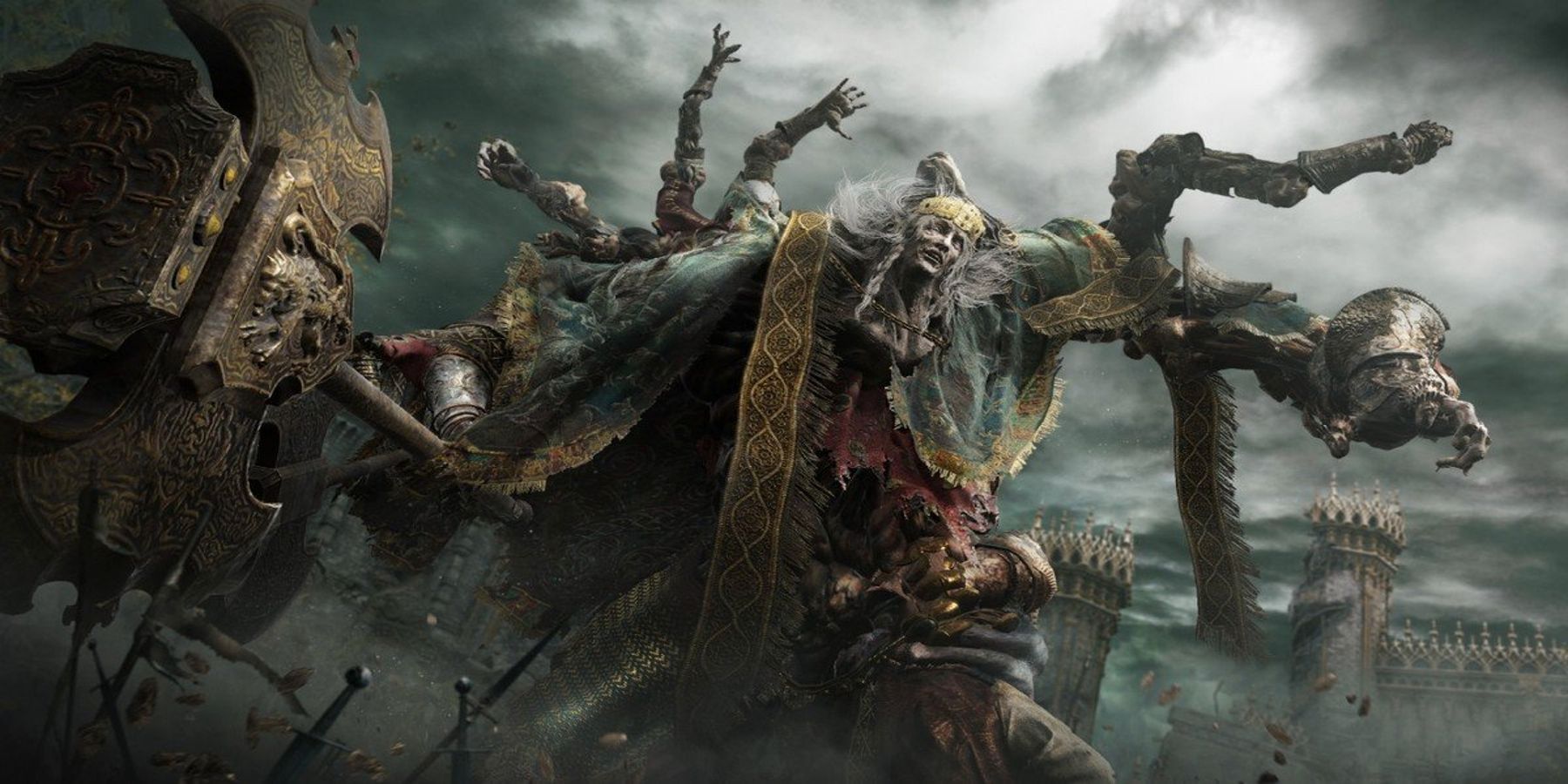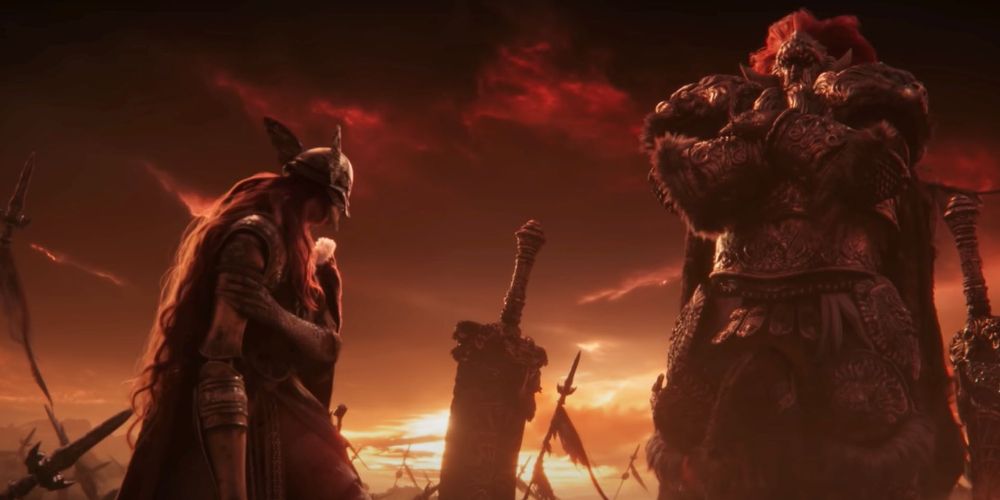Of all the events in the backstory of Elden Ring, FromSoftware's newest dark fantasy RPG, the Shattering is the most consequential to the game's plot and lore, not to mention the challenges player characters face. This war between the demigods who inherited the Great Rune fragments of the sundered Elden Ring tore apart a prosperous empire, threw entire armies into a meat-grinder of slaughter, and literally scarred the Lands Between themselves. By exploring the game world of Elden Ring, reading the descriptions of certain items and monuments, and examining the content of certain cutscenes, it's possible to assemble a rough timeline of the Shattering's various battles and military campaigns, revealing a full picture of a war even more devastating and tragic than it seems at first glance.
From a narrative perspective, Elden Ring's long-ago Shattering war acts as a call to arms for the player characters of the game. The demigods, through selfish warmongering and ambition, wrecked the Lands Between and forfeited their right to rule, giving the exiled people known as Tarnished a heroic reason to return to the Lands Between and claim the position of Elden Lord for themselves. From a game design perspective, a past war justifies the creation of an RPG open world filled with stately ruins, fortified castles, and roaming bands of soldiers who attack PCs on sight.
At first glance, the Shattering seems to have been a wild melee of destruction, with each Elden Ring-seeking Demigod and their personal armies fighting a war of all against all. However, by examining the terrain, relics, monuments, and survivors of Elden Ring's world, it's possible to assemble a general picture of what the war was actually like. One can see the composition of each faction's armies, the movements of troops, the tactical goals of certain offenses, and the long-term strategic goals of each Demigod leader – not to mention the cost of the conflict.
The resulting picture is not a pretty one.
Elden Ring's Shattering – The Outbreak Of War & Initial Maneuvers
The Shattering started, appropriately enough, with the literal shattering of the Elden Ring – a glimmering symbol of power within the primordial Erdtree that enforced a series of metaphysical laws upon reality. When the Ring shattered, fragments of its semiotic power called Great Runes fell into the hands of the demigods assembled just outside the Erdtree's entrance. When players finally confront Morgott the Omen King in the royal capital of Leyndell, he lists each of these Rune-claiming Demigods by name – Godrick the Golden, the twin prodigies Miquella and Malenia, General Radahn, Praetor Rykard, and Lunar Princess Ranni – before scornfully condemning them as "willful traitors, all." A monument of stone swords near Leyndell adds extra commentary to Morgott's monologue with this inscription:
"The First Defense of Leyndell
A sovereign alliance rots from within
Traces yet remain of bloody conspiracy"
This monument of battle suggests a shadow war broken out soon after the Great Runes of the Elden Ring were claimed. The newly empowered demigods (with the possible exception of Morgott) each wished to become the new Elden Lord and shape the future of the Lands Between. With Queen Marika, the divine being in charge of choosing the next Elden Lord, nowhere to be found, each of these demigods likely wished to assert their right to rule with magic and martial prowess. The initial skirmishes and schemes must have proven fruitless, for all the demigods besides Morgott left Leyndell and returned to the lands they ruled. But they would soon return with armies in their wake.
Elden Ring's Shattering – The Siege Of Leyndell Capital
Another sword monument in the Altus Plateau region of Elden Ring reveals details about what appears to be the first major military engagement of the war known as the Shattering:
"The Second Defense of Leyndell
The Fell Omen stacks high the corpses of heroes
Yet the Erdtree remains unshaken"
This battle description is a precise match for one of the battle scenes shown in Elden Ring's cinematic trailer, where a massive army of foot soldiers, knights, trolls, and siege towers advance towards the inner walls of Leyndell, the Royal Capital, as giant darts rain down on them from above. One can easily imagine Morgott, in his disguise as Elden Ring's fearsome character Margit the Fell Omen, using his demigod strength to hurl these massive spears towards the besieging armies, occasionally resting to perform command-related duties such as sending messengers and dispatching his military reserves to fortify beleaguered sections of the walls.
The siege scene in Elden Ring's cinematic trailer doesn't directly identify the demigod – or demigods – who tried to besiege Leyndell. Each army wears similar armor, but at least one of the armies in this cinematic siege has foot soldiers with wide-brimmed kettle helmets and knights with helmet crests of long, tangled hair. Both of these types of helm are worn by the soldiers who serve Godrick, the lord of Elden Ring's Stormveil Castle, infamous for using the abominable art of Grafting to make himself stronger. If Godrick was indeed the chief architect of the siege of the royal capital, his offense failed spectacularly, and he was forged to break off the siege and return to his realm of Limgrave.
Elden Ring's Shattering – The Assault On Volcano Manor
Gideon Ofnir the All-Knowing, a regular resident and source of lore at the Roundtable Hold, has several details to share about the Rune-bearing demigods of Elden Ring and the battles they fought. Of the demigod called Praetor Rykard, he has this to say:
"He is a ruthless justiciar who commands a company of inquisitors, reviled for his serpentine demeanor. The volcano, Mt. Gelmir, lies in the west of the Altus Plateau; the realm of the Erdtree. It was the stage of the most appalling battle in the entirety of the Shattering."
If an Elden Ring player visit Mt. Gelmir, they'll discover numerous horrible battlefields, covered with mounds of burned corpses, charred palisades, and slumped Leyndell soldiers who are either weeping over the bodies of their dead comrades or devouring them (or both). Unlike in other regions of the Lands Between, the Mt. Gelmir region has no soldiers or knights clad in the livery of the demigod called Rykard, for the warriors who once followed the ambitious, proud Rykard turned on the Lord of Elden Ring's Volcano Manor when he fed himself to the Great Serpent in order to become an immortal monster capable of slaying the gods.
Indeed, Rykard, Lord of Blasphemy did not need an army or the Elden Ring in order to fulfill his ambition to devour, grow, and evolve into a god-devouring abomination – he merely had to hunker down in his Volcano Manor, sending out his ruthless inquisitors and Abductor Virgin machines in order to capture worthy meals. When the armies of Leyndell marched to Mt. Gelmir in order to crush Rykard's heresy, they were likely met with a tide of horrors – magically animated murder machines, the Volcano Manor heretical Tarnished hunters of Elden Ring, and fire-wielding serpent-folk born from blasphemy itself.
Elden Ring's Shattering – The Humiliation Of Godrick
Many were the heroic deeds performed by Elden Ring's demigod characters during the brutal Shattering war; alas, few if any of these deeds were performed by Godrick the Golden, born the weakling runt among his demigod peers and prone to engage in reckless acts to prove his worth. Kenneth Haight, a pompous but good-hearted aristocrat NPC players can find near the Mistwood, has this to say about the self-proclaimed Lord of Limgrave:
"Lord? Don’t make me laugh. First he hid himself amongst the womenfolk to flee the capital, then hid from Radahn in that castle… Then he insulted Malenia, lost to her in battle, only to lick her boots rather than die like a man. Has he no shame, the big girl’s blouse?"
If Godrick was able to disguise himself as a woman in order to flee from the capital with his Great Rune, he must have still mostly been human back then – not yet deformed by the fusing of countless limbs and body parts to his flesh. After his armies failed to captured Leyndell, he would have withdrawn to Limgrave and his Stormveil Castle, either refusing to engage General Radahn in battle or refusing to form an alliance with the enormous, star-conquering demigod.
When Elden Ring's Malenia and her Cleanrot Knights passed through Limgrave, Godrick must have thought Malenia a foe he could conquer; how dangerous, after all, could a warrior be when their flesh was literally rotting away? And so Godrick attempted to fight the most difficult boss in all of Elden Ring. The results of his ill-chosen battle are recorded for posterity on a Sword Monument in Limgrave:
"Godrick the Golden, humiliated
Having tasted defeat by the Blade of Miquella
Now on his knees, begging for mercy."
It was probably this humiliation that let Godrick to commit himself to his abominable experiments – butchering the bodies of trolls, dragons, Omens, and Tarnished, seeking the strength to surpass his Elden Ring ancestor Godfrey, the first Tarnished, by grafting the parts of strong creatures into his flesh.
Elden Ring's Shattering– The Tragedy Of Caelid
Before the Shattering, Caelid might have been a beautiful place to live in. Selia, Town of Sorcery, was a center of magical learning comparable to Raya Lucaria, a place where a young Radahn learned the secrets of gravitational magic from an Alabaster Lord, eventually gaining the strength needed to stop the very stars in their tracks (specifically, the meteors and alien lifeforms orbiting the skies above the Lands Between). Radahn shared his gravity-infused archery skills, the red-haired crest of his helmet, and his unshakable pride with the troops he commanded. At their height, the soldiers and Redmane Knights of Elden Ring's incomparable Radahn must have been a vast and stalwart army indeed, a force fit to be commanded by one of the mightiest demigods.
Just as Malenia, Blade of Miquella, was small compared to her giant brother-in-law, so too were her Cleanrot Knights few in number compared to Radahn's legions. Each of these Cleanrot Knights, however, were deadly forces to be reckoned with – heavily armored, skilled in the use of spears, scythes, and thrusting swords, and even taught holy incantations by the saintly Miquella himself. Each of these Cleanrot Knights, according to the descriptions for their armor, "vowed to fight alongside Malenia, despite the inevitable, if gradual, putrefaction of their flesh. Their acceptance of their fate made these battles fiercest of all." Fanatically devoted to both Malenia and her beguiling Elden Ring demigod brother Miquella, fearless in the face of death, the Cleanrot Knights were celebrated for their "celebrated for their undefeated campaign in the Shattering," marching from victory to victory up until their final confrontation with Radahn's army in Caelid.
Both Malenia and Radahn must have both wanted the battle of Caelid to happen. These two, to paraphrase quotes from Elden Ring's trailers, were "the mightiest warriors" of the Shattering and commanded the most fearsome armies; if one defeated the other in battle, no one else could stop them from claiming the power of the Elden Ring and the title of Elden Lord (though Malenia likely wished to claim the throne for her beloved brother Miquella). The outcome of Malenia and Radahn's Elden Ring trailer boss battle is described in stark details upon a certain monument of Swords:
"The Battle of Aeonia
Radahn and Malenia locked in stalemate
Then, the scarlet rot blooms"
In a cruel irony, the armies of Radahn and Malenia remained undefeated to the very end, for their struggle ended in a catastrophic stalemate where neither side could achieve victory. Radahn, with his fearsome swords and gravitational sorcery, slaughtered the Cleanrot Knights in droves. Malenia, pushed to her limits by Radahn's star-conquering strength, unleashed the divine power of Rot she had for so long restrained, a scarlet flower that flooded the land with virulent toxins and spores. And so one of Elden Ring's harder regions, Caelid, fell into ruin, its former ecosystem replaced with strange fungal growths, toxic lakes, and mutated organisms. The exhausted Malenia was rushed back to her Halligtree home by the few surviving Cleanrot Knights. General Radahn, his mind and body eroded by the Scarlet Rot, wandered mindlessly along the shores of Caelid, devouring the corpses of friend and foe alike, and the remnants of Radahn's army dedicated their lives to keeping the Scarlet Rot in check via fire magic, flame-thrower tanks, and barriers of molten rock.
This, then, was the Shattering of Elden Ring – a civil war between demigods, each with their own noble ideals and sinister qualities, neither truly heroic or truly villainous. (Except maybe for Elden Ring's Mohg, Lord of Blood. That fellow is a true piece of work.)

